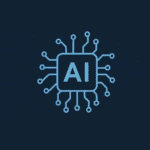Artificial Intelligence in 2025 is advancing faster than ever, shaping robotics, automation, creativity, safety policy, and global competition. Here’s a comprehensive look at the most important developments happening right now.
1. AI Meets Robotics – The Digital-Physical Fusion
A major shift in 2025 is the move from purely digital AI to AI-powered robotics. Leading AI companies are now building robots that blend language, vision, and physical capabilities.
Key highlights:
- New robotics models can pick up objects, understand environments, and perform multi-step physical tasks.
- Affordable robotic arms are becoming accessible, allowing startups and small labs to experiment with embodied AI.
- Warehouse robots are evolving from task-specific machines to more general-purpose humanoid systems.
- Current challenges remain: robots still struggle with reasoning about physics, spatial planning, and real-world unpredictability.
This moment is being compared to a potential “ChatGPT moment for robotics.”
2. The Rise of Agentic AI – Autonomous Digital Workers
Agentic AI is one of the fastest-growing categories. These are intelligent agents capable of taking actions, running workflows, and making decisions with minimal supervision.
Recent trends show:
- Businesses are increasingly deploying AI agents for customer service, analysis, and operational automation.
- Enterprise spending on agent-based systems is rapidly increasing.
- Safety, interpretability, and reliability are now central concerns as these AI systems operate independently.
Agentic AI is transforming workplaces the same way automation transformed manufacturing.
3. Multimodal AI Becomes Mainstream
AI no longer works with text alone. The newest models are multimodal, meaning they can understand and generate text, images, audio, and video simultaneously.
Why this matters:
- Interfaces become more natural – users can talk, show, or write, and the AI understands all.
- Multimodal systems are improving industries like healthcare, autonomous vehicles, and creative production.
- These systems require more advanced compute power and stronger safety controls.
Multimodal interaction is quickly becoming the default for advanced AI systems.
4. Embodied Intelligence – A Step Toward AGI
Researchers now emphasize that advanced intelligence requires embodiment: the ability for AI to sense, act, and learn in the physical world rather than just digital text.
Key research themes:
- Integrating perception, decision-making, and physical action.
- Robots learning from real-world feedback loops.
- Combining language models with motion and environment models.
Embodied intelligence is seen as a foundational step for achieving more general-purpose AI capabilities.
5. AI Safety, Regulation & Risk Management Take Center Stage
Governments worldwide are shifting toward stronger AI oversight.
Important developments include:
- Reports outlining risks from powerful, general-purpose AI systems.
- New laws requiring transparency, safety evaluations, and internal risk controls from AI developers.
- Guidance on preventing misuse, including deepfakes, autonomous agents, and uncontrolled model behavior.
This marks the beginning of global AI governance frameworks.
6. Creative AI Enters a New Era
AI isn’t just smart – it’s becoming highly creative.
Recent trends include:
- AI and Extended Reality (XR) combining to produce immersive, AI-generated environments.
- Artists using AI for co-composition, writing, generative visuals, and real-time performance.
- Growth in cross-domain generative content (AIGC) spanning text, visuals, and media.
- New ethical discussions around originality, authorship, and copyright.
Creative professionals are now working alongside AI rather than competing with it.
7. Global AI Competition Intensifies
The global AI landscape is shifting rapidly.
Key observations:
- The U.S. remains a leader, but China is closing the gap in research output, patents, and large model development.
- Countries worldwide are investing massively in AI talent and infrastructure.
- This race will shape economic power, military capabilities, and technological influence in the coming decades.
AI is now a core geopolitical battleground.
8. AI Skill Training Expands in Rural India
A major digital initiative is training over half a million rural entrepreneurs in AI, machine learning, data analysis, and cybersecurity.
Goals include:
- Empowering rural communities to adopt AI tools.
- Supporting digital governance and small-business innovation.
- Reducing the urban-rural digital divide.
This is a step toward inclusive AI adoption across regions.














